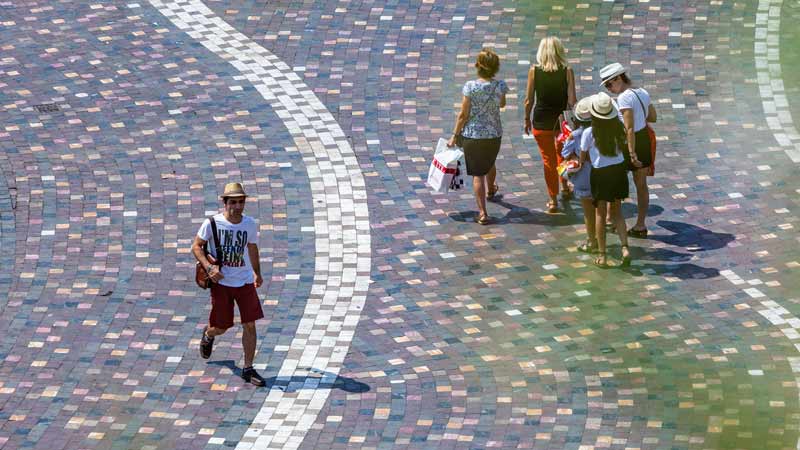Athens - Walk and shop a little bit history

Athens - Walk and shop a little bit history
Starting point: Monastiraki Square
Ending point: Agion Asomaton Square
Approach distance: 1,5 km
Ideal time: saturday or sunday
◇ Monastiraki Square

Monastiraki is a unique blend of various styles, eras, and cultures. It is full of life and dedicated to shopping and trading as well as a meeting point for Athenians. Renovated in 2009, the square was paved with mosaic blocks of marble, carved stone, and cast iron - symbolizing the influences and the spectrum of the Mediterranean architectural cadence. The works for the metro station (opened in Monastiraki in 2004) were completed with great difficulties because of the existence of the sacred Eridanos River of ancient Athens. In the modern city, the only uncovered part of the river was nearby the archaeological site of Kerameikos. The traces of the lost river were discovered again, and are partly visible in a special exhibition space for archaeological finds within the metro station and through an open exhibition on the plaza.
◇ The Tzistarakis Mosque
As you walk out from Monastiraki Metro Station on your right-hand side you’ll see a small chapel. The Tzistarakis Mosque (1759) takes its name from the Ottoman ruler Mustafa Tzistarakis. It was known as the Mosque of the Lower Fountain, a well that was nearby, which provided water to the Eridanos. Since 1975, it houses a remarkable collection of pottery from Greece, Cyprus, and modern Turkey. Inside, one can learn and observe photos taken from several artists, which signify the historical significance of the mosque.
△ Go to Areos Street
Areos Street begins at Monastiraki Square, between Tzistarakis Mosque and Monastiraki Metro Station. It is difficult today to imagine this piece of Monastiraki as it was during the Ottoman rule. It contained a central market, full of vegetables and fruits, meat and fish, housed in sheds constructed over the ruins of the Library and a Byzantine church built at its heart.
◇ Hadrian's Library
On your left-hand side, there is part of the wall of the library, built in 132 A.D. It was an offering to Athens from Hadrian, the Roman Emperor who showed particular interest and sympathy for the city. The entrance of the Hadrian's Library looked at the Roman Agora, founded by Julius Caesar in 10 A.D as an extension of Athens.
▷ Turn right to Adrianou Street
Adrianou Street is one of the longest streets of Athens' historic districts. It divides the Plaka to upper (pano) and lower (kato) and continues to Agora Square. Shortly obstructed by the archaeological area of Hadrian's Library, the Adrianou street continues over a last stretch from Monastiraki to Thissio. This part of the street is lined with many taverns, restaurants and cafes.
◇ Dioskouri

Dioskouri (Adrianou Street 37-39), is a beautiful tavern with a stunning outdoor area. With over 30 years of presence, it offers a wide assortment - which includes pork, chicken, sausages, meatballs, cheese-salad, and vegetables.
◇ Ancient Agora
The Ancient Agora (Adrianou Street 24) was the heart of the Ancient Athens and the center of social, spiritual and economic life. It was a place to converge, have political discussions and commercially trade. The Agora is where government and justice were laid out as well as a religious center – the point of which all roads led to. Here, Apostle Paul preached Christianity for the first time to Greeks in 51 A.D..






